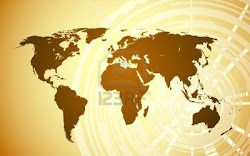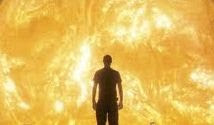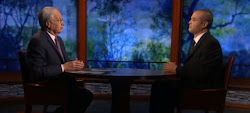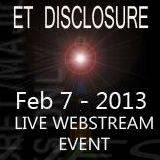Paste the link if you don't receive the iamges/can't access the links.
http://www.newscientist.com/article/mg20427341.200-in-susy-we-trust-what-the-lhc-is-really-looking-for.html?full=true
Love and Light.
David
In SUSY we trust: What the LHC is really looking for
- 11 November 2009 by Anil Ananthaswamy

This simulation depicts the decay of a Higgs particle following a collision of two protons in the CMS experiment (Image: CMS)
AS DAMP squibs go, it was quite a spectacular one. Amid great pomp and ceremony - not to mention dark offstage rumblings that the end of the world was nigh - the Large Hadron Collider (LHC), the world's mightiest particle smasher, fired up in September last year. Nine days later a short circuit and a catastrophic leak of liquid helium ignominiously shut the machine down.
Now for take two. Any day now, if all goes to plan, proton beams will start racing all the way round the ring deep beneath CERN, the LHC's home on the outskirts of Geneva, Switzerland.
Nobel laureate Steven Weinberg is worried. It's not that he thinks the LHC will create a black hole that will engulf the planet, or even that the restart will end in a technical debacle like last year's. No: he's actually worried that the LHC will find what some call the "God particle", the popular and embarrassingly grandiose moniker for the hitherto undetected Higgs boson.
"I'm terrified," he says. "Discovering just the Higgs would really be a crisis."
Why so? Evidence for the Higgs would be the capstone of an edifice that particle physicists have been building for half a century - the phenomenally successful theory known simply as the standard model. It describes all known particles, as well as three of the four forces that act on them: electromagnetism and the weak and strong nuclear forces.
It is also manifestly incomplete. We know from what the theory doesn't explain that it must be just part of something much bigger. So if the LHC finds the Higgs and nothing but the Higgs, the standard model will be sewn up. But then particle physics will be at a dead end, with no clues where to turn next.
Hence Weinberg's fears. However, if the theorists are right, before it ever finds the Higgs, the LHC will see the first outline of something far bigger: the grand, overarching theory known as supersymmetry. SUSY, as it is endearingly called, is a daring theory that doubles the number of particles needed to explain the world. And it could be just what particle physicists need to set them on the path to fresh enlightenment.
So what's so wrong with the standard model? First off, there are some obvious sins of omission. It has nothing whatsoever to say about the fourth fundamental force of nature, gravity, and it is also silent on the nature of dark matter. Dark matter is no trivial matter: if our interpretation of certain astronomical observations is correct, the stuff outweighs conventional matter in the cosmos by more than 4 to 1.
Ironically enough, though, the real trouble begins with the Higgs. The Higgs came about to solve a truly massive problem: the fact that the basic building blocks of ordinary matter (things such as electrons and quarks, collectively known as fermions) and the particles that carry forces (collectively called bosons) all have a property we call mass. Theories could see no rhyme or reason in particles' masses and could not predict them; they had to be measured in experiments and added into the theory by hand.
These "free parameters" were embarrassing loose threads in the theories that were being woven together to form what eventually became the standard model. In 1964,Peter Higgs of the University of Edinburgh, UK, and François Englert and Robert Brout of the Free University of Brussels (ULB) in Belgium independently hit upon a way to tie them up.
That mechanism was an unseen quantum field that suffuses the entire cosmos. Later dubbed the Higgs field, it imparts mass to all particles. The mass an elementary particle such as an electron or quark acquires depends on the strength of its interactions with the Higgs field, whose "quanta" are Higgs bosons.
Fields like this are key to the standard model as they describe how the electromagnetic and the weak and strong nuclear forces act on particles through the exchange of various bosons - the W and Z particles, gluons and photons. But the Higgs theory, though elegant, comes with a nasty sting in its tail: what is the mass of the Higgs itself? It should consist of a core mass plus contributions from its interactions with all the other elementary particles. When you tot up those contributions, the Higgs mass balloons out of control.
The experimental clues we already have suggest that the Higgs's mass should lie somewhere between 114 and 180 gigaelectronvolts - between 120 and 190 times the mass of a proton or neutron, and easily the sort of energy the LHC can reach. Theory, however, comes up with values 17 or 18 orders of magnitude greater - a catastrophic discrepancy dubbed "the hierarchy problem". The only way to get rid of it in the standard model is to fine-tune certain parameters with an accuracy of 1 part in 1034, something that physicists find unnatural and abhorrent.
Three into one
The hierarchy problem is not the only defect in the standard model. There is also the problem of how to reunite all the forces. In today's universe, the three forces dealt with by the standard model have very different strengths and ranges. At a subatomic level, the strong force is the strongest, the weak the weakest and the electromagnetic force somewhere in between.
Towards the end of the 1960s, though, Weinberg, then at Harvard University, showed with Abdus Salam and Sheldon Glashow that this hadn't always been the case. At the kind of high energies prevalent in the early universe, the weak and electromagnetic forces have one and the same strength; in fact they unify into one force. The expectation was that if you extrapolated back far enough towards the big bang, the strong force would also succumb, and be unified with the electromagnetic and weak force in one single super-force (see graph).
In 1974 Weinberg and his colleagues Helen Quinn and Howard Georgi showed that the standard model could indeed make that happen - but only approximately. Hailed initially as a great success, this not-so-exact reunification soon began to bug physicists working on "grand unified theories" of nature's interactions.
It was around this time that supersymmetry made its appearance, debuting in the work of Soviet physicists Yuri Golfand and Evgeny Likhtman that never quite made it to the west. It was left to Julius Wess of Karlsruhe University in Germany and Bruno Zumino of the University of California, Berkeley, to bring its radical prescriptions to wider attention a few years later.
Wess and Zumino were trying to apply physicists' favourite simplifying principle, symmetry, to the zoo of subatomic particles. Their aim was to show that the division of the particle domain into fermions and bosons is the result of a lost symmetry that existed in the early universe.
According to supersymmetry, each fermion is paired with a more massive supersymmetric boson, and each boson with a fermionic super-sibling. For example, the electron has the selectron (a boson) as its supersymmetric partner, while the photon is partnered with the photino (a fermion). In essence, the particles we know now are merely the runts of a litter double the size (see diagram).
The key to the theory is that in the high-energy soup of the early universe, particles and their super-partners were indistinguishable. Each pair co-existed as single massless entities. As the universe expanded and cooled, though, this supersymmetry broke down. Partners and super-partners went their separate ways, becoming individual particles with a distinctive mass all their own.
Supersymmetry was a bold idea, but one with seemingly little to commend it other than its appeal to the symmetry fetishists. Until, that is, you apply it to the hierarchy problem. It turned out that supersymmetry could tame all the pesky contributions from the Higgs's interactions with elementary particles, the ones that cause its mass to run out of control. They are simply cancelled out by contributions from their supersymmetric partners. "Supersymmetry makes the cancellation very natural," says Nathan Seiberg of Princeton University.
That wasn't all. In 1981 Georgi, together with Savas Dimopoulos of Stanford University, redid the force reunification calculations that he had done with Weinberg and Quinn, but with supersymmetry added to the mix. They found that the curves representing the strengths of all three forces could be made to come together with stunning accuracy in the early universe. "If you have two curves, it's not surprising that they intersect somewhere," says Weinberg. "But if you have three curves that intersect at the same point, then that's not trivial."
This second strike for supersymmetry was enough to convert many physicists into true believers. But it was when they began studying some of the questions raised by the new theory that things became really interesting.
One pressing question concerned the present-day whereabouts of supersymmetric particles. Electrons, photons and the like are all around us, but of selectrons and photinos there is no sign, either in nature or in any high-energy accelerator experiments so far. If such particles exist, they must be extremely massive indeed, requiring huge amounts of energy to fabricate.
Such huge particles would long since have decayed into a residue of the lightest, stable supersymmetric particles, dubbed neutralinos. Still massive, the neutralino has no electric charge and interacts with normal matter extremely timorously by means of the weak nuclear force. No surprise then that it is has eluded detection so far.
When physicists calculated exactly how much of the neutralino residue there should be, they were taken aback. It was a huge amount - far more than all the normal matter in the universe.
Beginning to sound familiar? Yes, indeed: it seemed that neutralinos fulfilled all the requirements for the dark matter that astronomical observations persuade us must dominate the cosmos. A third strike for supersymmetry.
Each of the three questions that supersymmetry purports to solve - the hierarchy problem, the reunification problem and the dark-matter problem - might have its own unique answer. But physicists are always inclined to favour an all-purpose theory if they can find one. "It's really reassuring that there is one idea that solves these three logically independent things," says Seiberg.
Supersymmetry's scope does not end there. As Seiberg and his Princeton colleague Edward Witten have shown, the theory can also explain why quarks are never seen on their own, but are always corralled together by the strong force into larger particles such as protons and neutrons. In the standard model, there is no mathematical indication why that should be; with supersymmetry, it drops out of the equations naturally. Similarly, mathematics derived from supersymmetry can tell you how many ways can you fold a four-dimensional surface, an otherwise intractable problem in topology.
All this seems to point to some fundamental truth locked up within the theory. "When something has applications beyond those that you designed it for, then you say, 'well this looks deep'," says Seiberg. "The beauty of supersymmetry is really overwhelming."
Sadly, neither mathematical beauty nor promise are enough on their own. You also need experimental evidence. "It is embarrassing," says Michael Dine of the University of California, Santa Cruz. "It is a lot of paper expended on something that is holding on by these threads."
Circumstantial evidence for supersymmetry might be found in various experiments designed to find and characterise dark matter in cosmic rays passing through Earth. These include the Cryogenic Dark Matter Search experiment inside the Soudan Mine in northern Minnesota and the Xenon experiment beneath the Gran Sasso mountain in central Italy. Space probes like NASA's Fermi satellite are also scouring the Milky Way for the telltale signs expected to be produced when two neutralinos meet and annihilate.
The best proof would come, however, if we could produce neutralinos directly through collisions in an accelerator. The trouble is that we are not entirely sure how muscular that accelerator would need to be. The mass of the super-partners depends on precisely when supersymmetry broke apart as the universe cooled and the standard particles and their super-partners parted company. Various versions of the theory have not come up with a consistent timing. Some variants even suggest that certain super-partners are light enough to have already turned up in accelerators such as the Large Electron-Positron collider - the LHC's predecessor at CERN - or the Tevatron collider in Batavia, Illinois. Yet neither accelerator found anything.
The reason physicists are so excited about the LHC, though, is that the kind of supersymmetry that best solves the hierarchy problem will become visible at the higher energies the LHC will explore. Similarly, if neutralinos have the right mass to make up dark matter, they should be produced in great numbers at the LHC.
Since the accident during the accelerator's commissioning last year, CERN has adopted a softly-softly approach to the LHC's restart. For the first year it will smash together two beams of protons with a total energy of 7 teraelectronvolts (TeV), half its design energy. Even that is quite a step up from the 1.96 TeV that the Tevatron, the previous record holder, could manage. "If the heaviest supersymmetric particles weigh less than a teraelectronvolt, then they could be produced quite copiously in the early stages of LHC's running," says CERN theorist John Ellis.
If that is so, events after the accelerator is fired up again could take a paradoxical turn. The protons that the LHC smashes together are composite particles made up of quarks and gluons, and produce extremely messy debris. It could take rather a long time to dig the Higgs out of the rubble, says Ellis.
Any supersymmetric particles, on the other hand, will decay in as little as 10-16seconds into a slew of secondary particles, culminating in a cascade of neutralinos. Because neutralinos barely interact with other particles, they will evade the LHC's detectors. Paradoxically, this may make them relatively easy to find as the energy and momentum they carry will appear to be missing. "This, in principle, is something quite distinctive," says Ellis.
So if evidence for supersymmetry does exist in the form most theorists expect, it could be discovered well before the Higgs particle, whose problems SUSY purports to solve. Any sighting of something that looks like a neutralino would be very big news indeed. At the very least it would be the best sighting yet of a dark-matter particle. Even better, it would tell us that nature is fundamentally supersymmetric.
There is a palpable sense of excitement about what the LHC might find in the coming years. "I'll be delighted if it is supersymmetry," says Seiberg. "But I'll also be delighted if it is something else. We need more clues from nature. The LHC will give us these clues."
Blood brothers?
String theory and supersymmetry are two as-yet unproved theories about the make-up of the universe. But they are not necessarily related.
It is true that most popular variants of string theory take a supersymmetric universe as their starting point. String theorists, who have taken considerable flak for advocating a theory that has consistently struggled to make testable predictions, will breathe a huge sigh of relief if supersymmetry is found.
That might be premature: the universe could still be supersymmetric without string theory being correct. Conversely, at the kind of energies probed by the LHC, it is not clear that supersymmetry is a precondition for string theory. "It is easier to understand string theory if there is supersymmetry at the LHC," says Edward Witten, a theorist at Princeton University, "but it is not clear that it is a logical requirement."
If supersymmetry does smooth the way for string theory, however, that could be a decisive step towards a theory that solves the greatest unsolved problem of physics: why gravity seems so different to all the rest of the forces in nature. If so, supersymmetry really could have all the answers.
Anil Ananthaswamy is a consulting editor for New Scientist





No comments:
Post a Comment